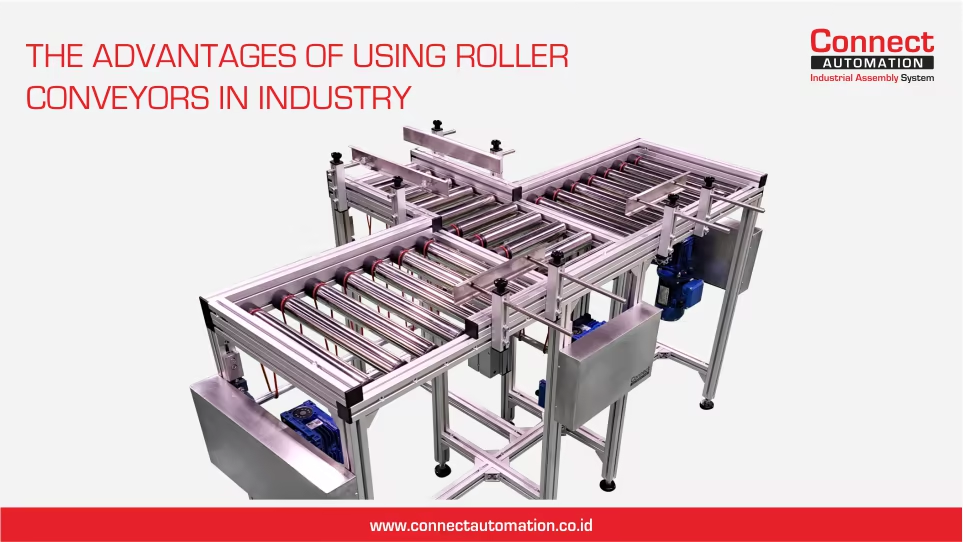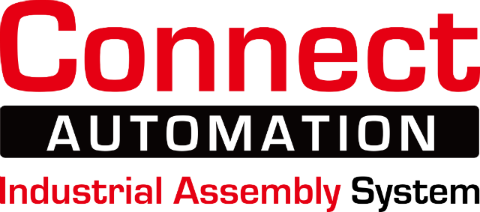REQUEST A FREE ESTIMATE!
The advantages of Using Roller Conveyors in Industry

Roller Conveyor is an industrial machine that functions to move goods from one place to another using rollers arranged parallel. To find out more about the types of Roller Conveyors, and to find out what type of Roller Conveyor suits your needs, you can read this article.
Why Should You Use a Roller Conveyor?
Various types of industry use roller conveyors to simplify the production process. Roller Conveyor is a type of conveyor that is commonly used in industry apart from Belt Conveyor. The conveyor rollers used usually have a variety of types and dimensions to suit the needs of each production line. A roller conveyor is a conveyor system where the main support for the goods being transported is the roller. The rollers in this system are slightly different from the rollers in other types of conveyor. The rollers in the Roller Conveyor system are specially designed to suit the conditions of the goods being transported, for example the rollers are given a rubber coating, anti-rust coating, and so on. Meanwhile, the rollers in other types of systems are designed to suit the belt they support. This roller is usually made of several materials to suit the product that will later be transferred, such as rubber roller, stainless roller, galvanized roller, aluminum roller, and so on.
Main Components in Roller Conveyors
Just like other conveyors, Roller Conveyors also have main components and parts. Apart from that, the Roller Conveyor has 2 types of systems, namely the gravity system (without using engine power) and the machine system (each roller will rotate according to the desired speed. Here are some components of the Roller Conveyor: 1. This body frame has the function of supporting the roller so that the roller's location does not move and remains on track. Installation of the roller with the body frame must be fitting and appropriate, so that unwanted vibrations do not occur when the roller rotates. Apart from that, the body frame must also determine the appropriate distance between the rollers so that the goods to be transported do not fall. In addition, consideration of what product will be transferred will affect the distance of each roller. 2. The support pole functions as a foundation for the Roller Conveyor body frame, or can be referred to as conveyor legs. This pole functions as a support for the Roller Conveyor against the ground that the conveyor system passes through. The distance between the support poles or conveyor legs varies depending on how long the conveyor is and how heavy the product is being transferred. 3. The driving motor has the function of moving the roller, so that the goods to be transferred move. However, there are several types of roller conveyors, such as gravity rollers or Roller Conveyors which do not use machines at all, only using gravity as a way to transfer products. 4. Roller Conveyor has the function of moving goods to be transferred. When the roller rotates, the goods automatically move from one roller to another. The dimensions of the rollers must also be the same so that the items on them remain straight and do not get stuck.
Roller Types in Roller Conveyors
Roller Conveyors from Connect Automation have several types of Roller options such as Stainless Steel Rollers, Galvanized Rollers, Rubber Rollers, Aluminum Rollers, Smooth Rollers and Edge Rollers. Each of these rollers has different advantages and disadvantages, and also this roller has an important role in the transfer of goods.
Functions and Advantages of Roller Conveyors
Roller conveyors can only move items in the form of units such as boxes or very long items such as sticks or others. The weakness of the roller conveyor is that it cannot move items in granular or powder form. If it is necessary to transfer granules or powder, it must be packaged first in a box or box so that it can be transferred using a Roller Conveyor. The advantage of a roller conveyor is that it can transform at a certain slope so that the conveyor can move from one level to another. Apart from that, the Roller Conveyor can divert unit paths that have quite sharp turns, so this is very useful in places with limited space. Roller Conveyors can also use motors or simply use gravity as a means of distributing goods. Not only that, another advantage is that the Roller Conveyor can combine two separate lines, one method is YLine and accumulating Roller Conveyor.
Conclusion
Each conveyor definitely has various strengths and weaknesses, from this you have to be careful in selecting a conveyor what kind of conveyor needs are needed for your current industry. Connect Automation is a company that provides conveyors in Indonesia, provide solutions for you by consulting all your production line needs. Contact us now to realize your dream conveyor now!
Get FREE consultation with our sales engineer team!
Appoint a Consultation
Connect Automation specializes in providing automation solutions, including conveyor systems, to improve efficiency across various industries. The company delivers cutting-edge technology to help organizations automate tasks and optimize workflows. Connect Automation helps businesses reduce manual efforts, boost productivity, and achieve better outcomes. With a customer-focused approach, the company designs tailored solutions to ensure smooth and effective automation transitions for long-term success.
Kawasan Industri Jababeka Tahap 1, Jl. Jababeka II D Blok C14L Cikarang, Indonesia (17530)
(021) 893 5060 Google Maps
Rungkut Industri III, No. 37, Rungkut Menanggal, Kec. Gn. Anyar Surabaya, Indonesia (60293)
(031) 9985 8624 Google Maps
